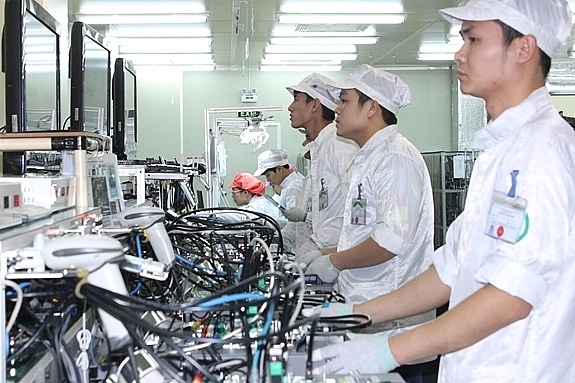Seven "threats" to Vietnam's industrial development
The Ministry of Industry and Trade has pointed out seven main risks to Vietnam's industrial development, and at the same time determined that in the future, it is necessary to focus on forming a sustainable foundation for industry; promoting the development of the manufacturing industry; transforming and improving the competitiveness of heavy industry.
 |
|
The Ministry of Industry and Trade has determined that it is necessary to focus on forming a sustainable foundation for industry development through solving bottlenecks in supporting industries. Photo: Thanh Nguyen |
According to the Ministry of Industry and Trade, the growth model of gradually participating in the global production and supply chain has contributed to the transformation and accumulation of significant internal resources of industry and commerce.
However, the growth engine based on expanding the scale of FDI investment on the basis of the advantage of cheap labor, the policy to promote short-term economic growth may no longer be appropriate to realize the goals set by the Decree resolution of the 13th Party Congress.
The Ministry has pointed out seven main risks to Vietnam's industrial sector.
Firstly, the growth rate of labor productivity in industries is lower than that of the whole economy, agriculture and service sectors; especially in the manufacturing and processing industries (2.7% per year compared with 4.7% per year for the whole country in the 2011-2015 period, estimated to increase only 1.5% per year in the 2016 – 2016 period).
Second, the industry's autonomy is low, dependence on FDI enterprises, dependence on imports for input materials and production technology is increasing, leading to low added value created in the domestic industry.
Statistics on import and export in the 2011 - 2020 period show that the share of capital imports in the total value of imported goods increased from 88.6% in 2011 to 91.1% in 2015, 91.2% in 2019 and is estimated to increase 91.5% in 2020. Export share of the FDI sector in total export turnover has increased from 17% in 1995 to 69.9% in 2019 and is estimated at 70.1% in 2020.
Third, the link between the FDI sector and the domestic sector is very weak, the spillover effect on productivity is low in taking advantage of exogenous technology from the FDI sector. The supporting industry develops slowly, reaching 10% of the export industry's demand for supporting industry products.
Fourth, production technology in industries is backwards. About 76% of equipment, machinery and technological lines imported from abroad belong to the 1960-1970 generation; 75% of equipment has been depreciated; 50% of equipment is refurbished.
Fifth, the spatial distribution of industries does not promote the advantages of geographical locations and potentials of localities.
Models of industrial clusters, especially specialized clusters to link and develop industry value chains, have not yet been formed to improve the ability of Vietnamese enterprises to participate in the supply chain for FDI enterprises and global value chains.
Sixth, the export industry can only participate in low-value-added segments in the global value chain. The export processing and manufacturing industries such as textiles, footwear, and electronics can only participate in intermediate stages with low added value (processing and assembly) in the global value chain.
Finally, the Ministry of Industry and Trade stated that industry and consumption are not environmentally friendly. Short-term growth policies inhibit the development of green industries and high-tech industries.
In the future, the Ministry of Industry and Trade determines that it is necessary to focus on forming a sustainable foundation for industry development through solving bottlenecks in supporting industries, autonomy in materials, components and essential details.
In addition, it is developing a platform for the development of the manufacturing industry, focusing on innovation in the manufacturing of products with superior features and quality on the basis of establishing new capabilities in design and system integration.
The Ministry of Industry and Trade also emphasized the perspective of transforming and improving the competitiveness of heavy industry; to replace, transform and upgrade outdated and inefficient technologies through support programs to transform technology, equipment and production processes towards green, modern, economical and energy efficient, with raw materials use.








